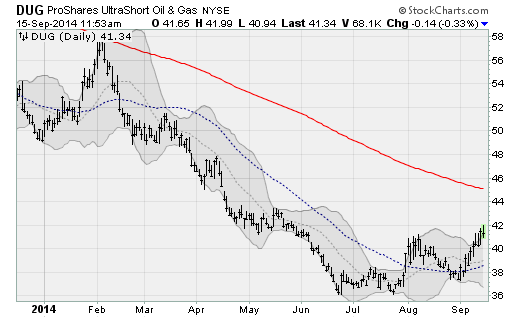This fall could be a season of dropping stocks
After an easy, breezy summer, September's reputation as a historically difficult month is threatening some excitement as we head toward October.
The Dow Jones industrials index lost the 17,000 level on Friday after repeatedly testing that threshold over the last four weeks. The S&P 500 spent another day below the 2,000 level. And the Russell 2000 small-cap index fell into negative territory for the year-to-date.
The pressure continued on Monday as the Russell 2000 dropped back below its 200-day and 50-day moving averages, indicating a medium-term downtrend. The evidence is building that additional losses are likely in the weeks to come.
To start, investor apprehension is growing over the approach of the Federal Reserve's first interest rate hike. The QE3 bond purchase program that began in 2012 is set to end next month. And much of the reason for the market's recent underperformance is the growing likelihood that after its next rate-setting meeting on Wednesday, the Fed will drop the "considerable time" language from its policy statement in terms of when that first rate hike will happen.
This is a big deal, given how deeply the Fed cut rates and for how much longer than usual it has held them down. And with the Fed not satisfied with merely cutting short-term interest rates to near zero percent, multiple iterations of bond buying has swelled the central bank's monetary base from $800 billion before the recession to more than $4 trillion now.
As a result, the financial system is been doped up on cheap money in a way that it never has before. No one knows what will happen when that monetary morphine is pulled away. But additional volatility is likely as expectations for the course of monetary policy are reset given that current market expectations, as discussed in a recent San Francisco Fed paper, are lagging behind the Fed's own projections from back in June (before the U.S. job market showed further improvement).
With bond yields so low, and so much money piled into bond funds ($1 trillion into U.S. bond funds since 2009) amid very low secondary market trading volumes, large price swings in areas like high-yield corporate bonds are a significant risk.
To this point, the Institute of International Finance -- a global association of banks -- recently warned of potential trouble here. And back in June, the Financial Times wrote that the Fed was looking at limiting a possible stampede out of bonds by imposing an exit fee to sell.
All of this comes at a time of relatively high investor complacency. According to the American Association of Individual Investors poll, only 26 percent of investors are "bearish" right now -- the lowest share since 2004.
Add to all this negative seasonality (market tends to underperform in September), extended stock market valuations (price-to-earnings ratios have rarely been higher, for instance), and weak technicals (breadth has been mediocre over the last month as fewer stocks have participated to the upside), and the potential for market fireworks this fall is high.
In response, I've recommended investors look to profit from the situation via leveraged inverse exchange-traded funds such as the ProShares UltraShort Oil & Gas (DUG), which is up more than 5 percent since added by Edge subscribers on Sept. 9.


